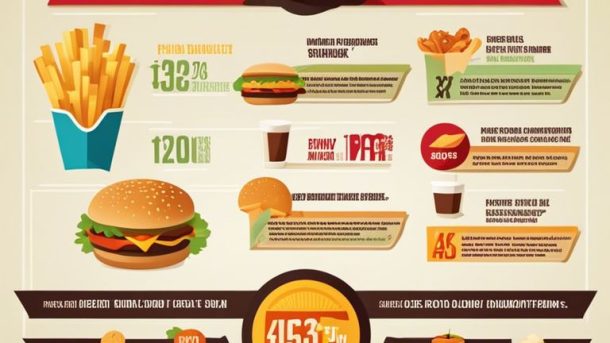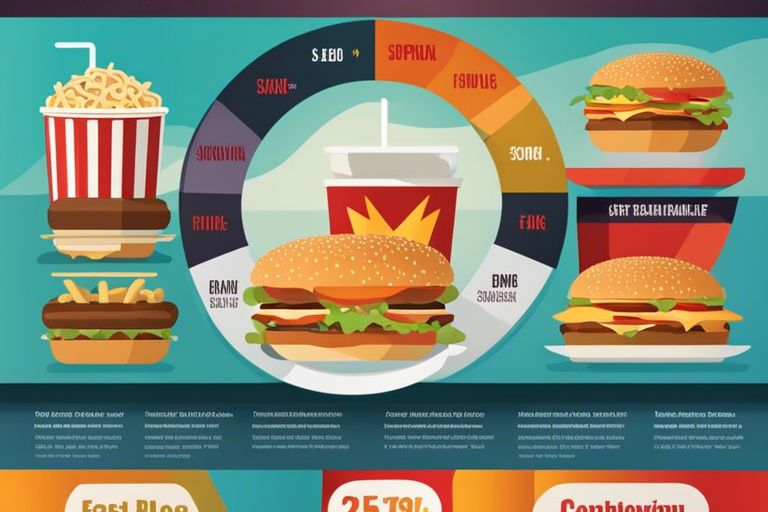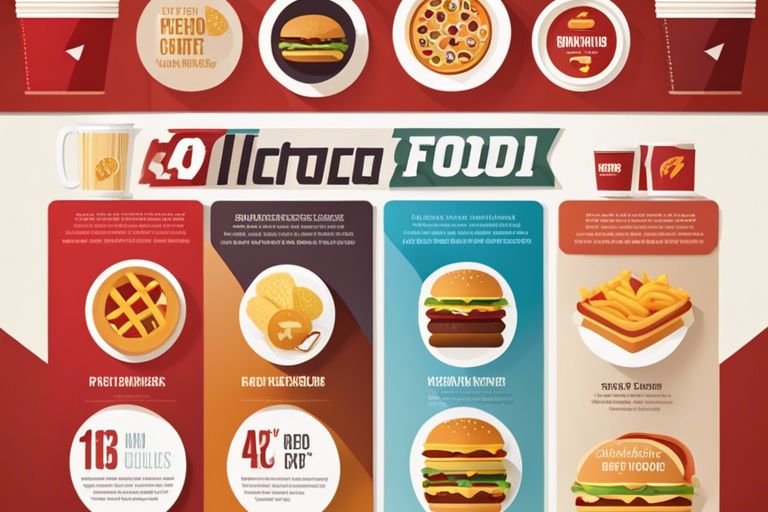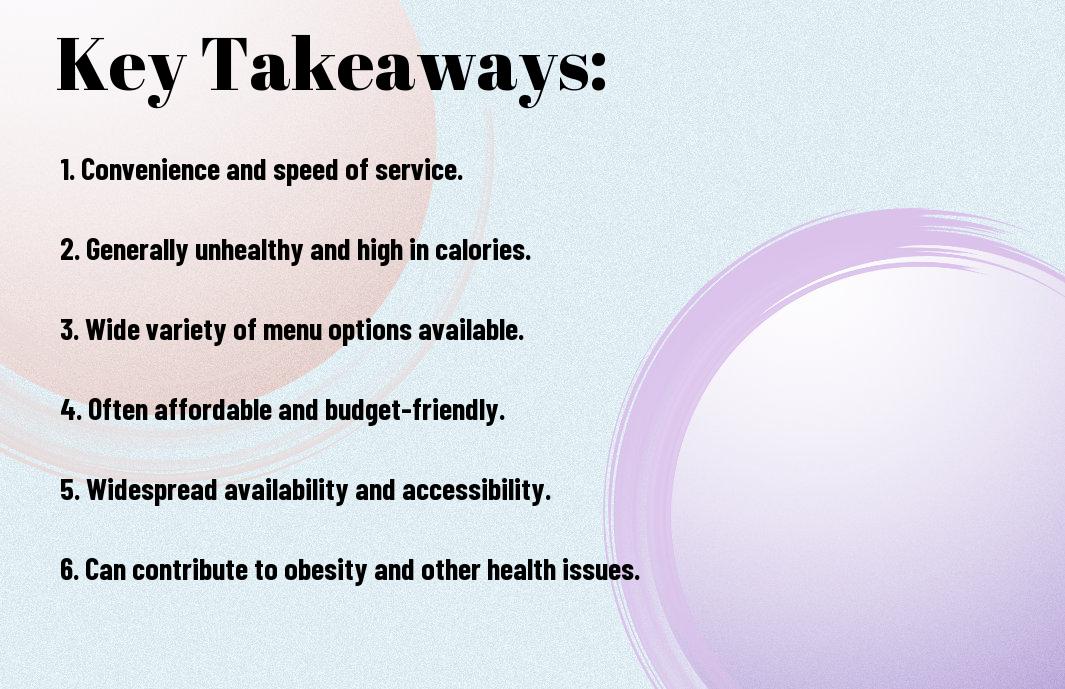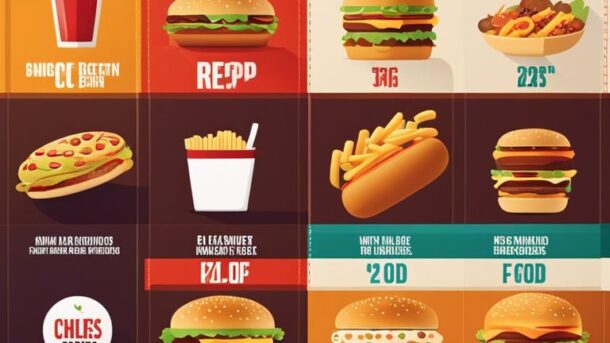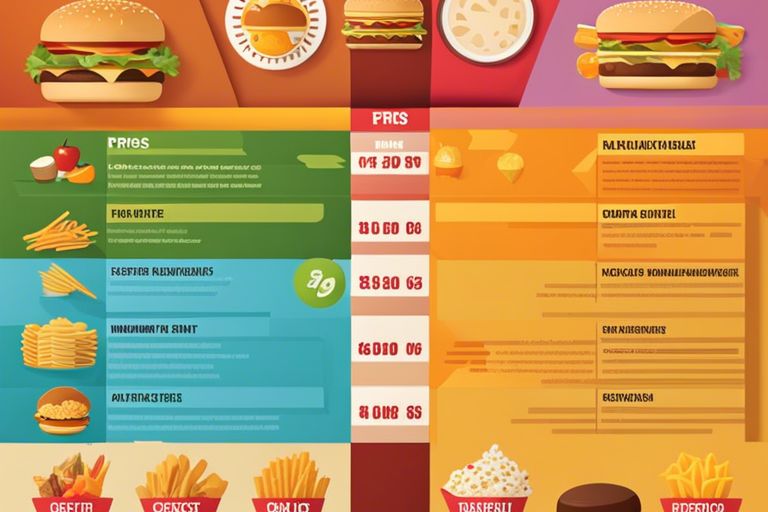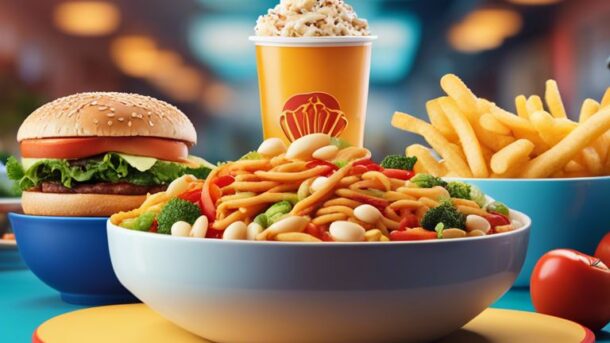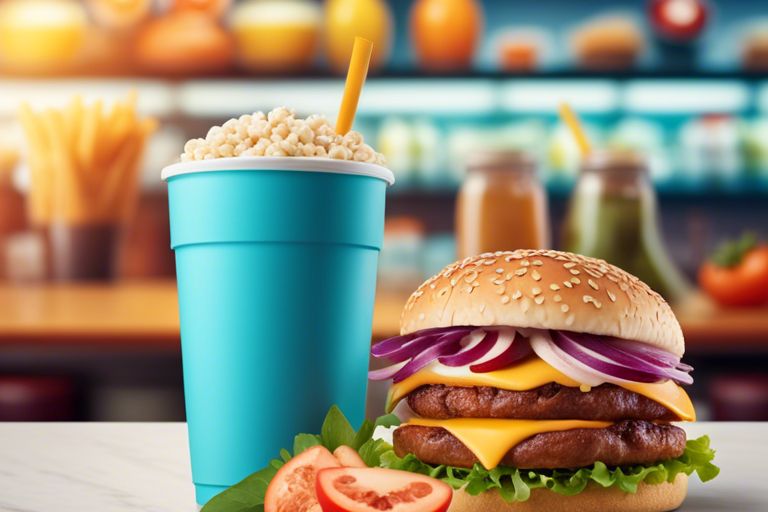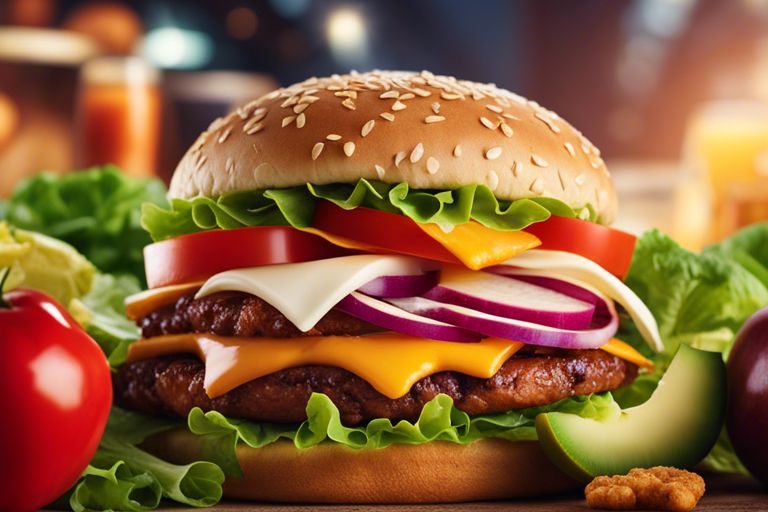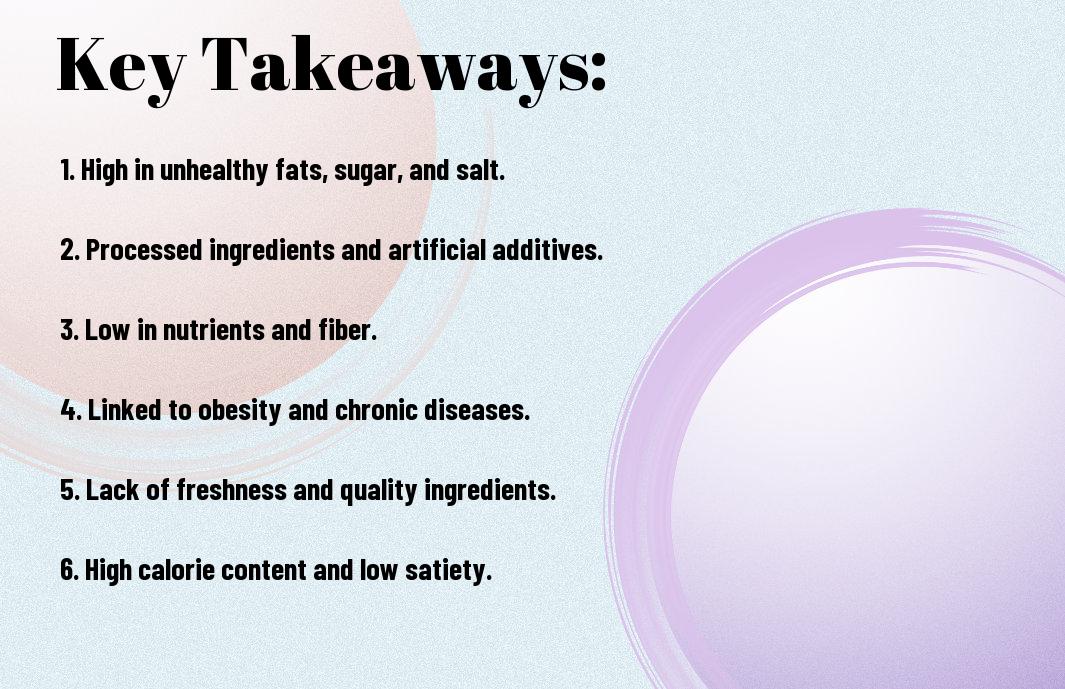Convenience is the key reason why fast food is popular. You live in a fast-paced society where time is a precious commodity. The quick service, easy accessibility, and affordable prices of fast food make it a go-to option for your busy schedule. In addition, the clever marketing strategies and addictive flavors of fast food options also play a role in their widespread popularity. Understanding these factors can help you make informed decisions about your food choices.
Key Takeaways:
- Convenience: Fast food is popular because of its quick service and easy accessibility for people on-the-go.
- Affordability: Fast food is often more cost-effective than dining at sit-down restaurants, making it a popular choice for budget-conscious individuals.
- Palatability: The flavors and convenience of fast food appeal to many individuals, making it a popular choice for meals and snacks.
Convenience and Time-Saving
The Rise of Busy Lifestyles
Busy schedules and hectic lifestyles have become the norm in today’s society. Between work, family responsibilities, and social commitments, finding time to prepare a home-cooked meal can be a challenge. As a result, many people turn to fast food as a convenient solution to satisfy their hunger quickly and easily.
With the rise of dual-income households and an increased emphasis on productivity, time has become a precious commodity. Fast food restaurants offer a solution for those days when you simply don’t have the time or energy to cook, allowing you to grab a meal on the go without sacrificing flavor or satisfaction.
Fast Food as a Quick Fix
Lifestyles filled with constant rushing and multitasking often leave little room for leisurely meals. Fast food establishments cater to this need for quick sustenance by providing a wide array of menu options that can be prepared and served in a matter of minutes. Whether you’re running between meetings or picking up the kids from school, fast food offers a convenient way to fuel your body without slowing you down.
The availability of drive-thru and delivery options further enhances the convenience of fast food, allowing you to enjoy a meal without even leaving your car or home. This quick and hassle-free service makes fast food an appealing choice for those looking to streamline their busy schedules without compromising on taste or quality.
Affordability and Value
Economic Factors Influencing Food Choices
The cost of food plays a significant role in determining what you choose to eat. Fast food is often perceived as a more affordable option compared to dining at a sit-down restaurant. This is because fast food chains have mastered the art of producing food at a lower cost, allowing them to offer meals at a fraction of the price you would pay at a traditional restaurant. Additionally, the convenience of fast food also makes it a more attractive choice when you are on a tight budget or looking for a quick and easy meal option.
- Fast food is designed to be affordable and convenient.
- Price promotions and value meals make fast food even more enticing.
- Fast food chains can offer lower prices due to economies of scale.
After considering these economic factors, it’s no surprise that many people opt for fast food when looking for a budget-friendly meal option.
The Perception of Cheap and Affordable Meals
On the topic of affordability, fast food has also been portrayed as offering cheap and affordable meals. The perception that you can get a filling meal for a low price at fast food restaurants makes them an attractive choice for those looking to stretch their dollar. Value meals, combo deals, and dollar menus further reinforce the idea that fast food is a cost-effective option for satisfying your hunger.
Understanding the economic factors and the perception of cheap and affordable meals associated with fast food can help shed light on why it remains a popular choice for many people, despite concerns about its health implications.

Marketing and Advertising Strategies
Once again, marketing and advertising strategies play a significant role in the popularity of fast food. These strategies have been honed over decades to create powerful brand recognition and influence consumer behavior. If you’re curious about how these strategies have shaped the fast-food industry, you can check out this insightful discussion on How did fast food become so popular?
The Power of Branding and Advertising
On the surface, fast-food marketing may seem straightforward, but it is backed by extensive research and psychological tactics to appeal to your preferences and emotions. From catchy jingles to memorable mascots, fast-food brands use every tool available to create a strong connection with consumers. The constant presence of advertisements on television, social media, and billboards reinforces brand loyalty and keeps fast-food restaurants at the top of your mind when hunger strikes.
Targeting Children and Families
Targeting children and families is a key component of fast-food marketing strategies. By appealing to children through colorful packaging, toy giveaways, and playgrounds, fast-food chains establish a lifelong customer base. Additionally, the convenience and affordability of fast food make it an attractive option for busy families looking for a quick meal on the go.
Families are often bombarded with ads promoting family meal deals and kid-friendly options, making fast food a convenient choice for a quick and easy dining experience. With busy schedules and demanding lifestyles, fast food offers a solution that fits the needs of modern families.
Taste and Cravings
Unlike homemade meals, fast food is designed with a specific focus on taste and instant gratification. The unique combination of flavors and textures in fast food can trigger intense cravings that are hard to resist. These cravings are often driven by the perfect balance of salt, sugar, and fat in fast food items, making them highly addictive.
The Science Behind Food Addictions
Taste preferences are not random, and the food industry capitalizes on this fact by creating products that are intentionally engineered to be irresistible. The combination of salt, sugar, and fat stimulates the pleasure centers in your brain, making you crave more of these foods. This cycle of craving and indulging can lead to food addiction, where your brain becomes dependent on the pleasure response triggered by fast food consumption.
The Role of Salt, Sugar, and Fat in Fast Food
Any fast food item you consume is likely to be high in salt, sugar, and fat. These ingredients not only enhance the taste of the food but also work together to create a sensation of pleasure in your brain. Salt enhances flavors, sugar provides a quick energy boost, and fat adds richness and satisfaction to the meal. The combination of these elements makes fast food highly rewarding and reinforces the cycle of craving and consumption.

Social and Cultural Factors
Many social and cultural factors contribute to the popularity of fast food in today’s society. These factors shape our attitudes towards food choices, dining habits, and overall lifestyle. Here are some key points to consider:
- Social gatherings often revolve around food, and fast food offers a convenient and affordable option for large groups of people to enjoy a meal together.
- Our fast-paced lifestyles have led to a greater demand for quick and easily accessible food options, making fast food a convenient choice for busy individuals and families.
After considering these factors, it’s no wonder that fast food has become a staple in many people’s diets.
The Influence of Social Media on Food Trends
Trends in food consumption are heavily influenced by what is popular on social media platforms. With the rise of food influencers and viral food videos, people are constantly exposed to new and trendy food items that often include fast food options. This continuous exposure further fuels the popularity of fast food in our culture.
Fast Food as a Social Activity
Food is an integral part of social interactions, and fast food establishments provide a casual and laid-back setting for people to come together over a meal. Whether it’s grabbing a quick bite with coworkers during lunch or meeting up with friends for a late-night snack, fast food offers a relaxed environment for socializing.
Plus, the affordability of fast food makes it an attractive option for gatherings and outings where cost is a consideration. The convenience and accessibility of fast food restaurants make them a popular choice for social activities among various age groups and demographics.
Health and Nutrition Concerns
The Dark Side of Fast Food: Unhealthy Ingredients
Not all fast food is created equal when it comes to health and nutrition. Many fast food items are loaded with unhealthy ingredients such as excessive amounts of salt, sugar, saturated fats, and refined carbohydrates. These ingredients are known to contribute to health issues such as obesity, high blood pressure, diabetes, and heart disease.
When you consume fast food regularly, you are putting your health at risk by exposing your body to these harmful ingredients. It’s important to be mindful of what you are putting into your body and to make informed choices when it comes to your diet.
The Impact on Public Health and Wellness
Concerns have been raised about the overall impact of fast food consumption on public health and wellness. The convenience and affordability of fast food have contributed to its widespread popularity, but at what cost? The rise in fast food consumption has been linked to the increase in obesity rates and chronic health conditions across populations.
Health experts warn that the high consumption of fast food can lead to a decline in overall health and well-being in communities. By prioritizing convenience over nutrition, individuals may be compromising their long-term health and quality of life.
Conclusion
Summing up, fast food is popular for several reasons, including convenience, affordability, and taste. The ability to quickly grab a meal on the go fits well with today’s fast-paced lifestyle. The lower cost of fast food compared to sit-down restaurants makes it an attractive option for many individuals and families. Additionally, the often indulgent and savory flavors of fast food can be highly appealing and satisfying.
Despite the convenience and affordability of fast food, it is important to be mindful of the potential negative health effects associated with frequent consumption. Balancing your fast food intake with healthier meal options and incorporating more nutritious ingredients into your diet can help you enjoy the occasional fast food treat without compromising your overall well-being. By being aware of your choices and making informed decisions, you can still enjoy the convenience and flavors of fast food while prioritizing your health.
Q: Why do people choose fast food over healthier options?
A: Fast food is popular because it is quick, convenient, and often less expensive than healthier options. Additionally, fast food is heavily marketed and readily available, making it a convenient choice for people with busy lifestyles.
Q: What are the health risks associated with consuming fast food regularly?
A: Consuming fast food regularly can lead to a variety of health risks, including obesity, heart disease, high blood pressure, and diabetes. Fast food is often high in calories, unhealthy fats, sodium, and sugar, which can contribute to these health issues when consumed in excess.
Q: How can someone make healthier choices when eating fast food?
A: To make healthier choices when eating fast food, opt for grilled or baked items instead of fried, choose water or unsweetened beverages instead of sugary drinks, and select side salads or fruit options instead of fries. Additionally, paying attention to portion sizes and limiting indulgence in fast food to occasional treats can help mitigate the negative health effects associated with fast food consumption.

















